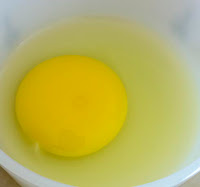Vitamin A
Vitamin A is a group of fat-soluble vitamins including retinol, retinal, retinyl palmitate, and the provitamin A carotenoids. Vitamin A is found in two principal forms in foods – retinol sourced from animals and carotene sourced from plants. Beta-carotene (the most important carotene) is a precursor to vitamin A. Of the carotenoid rich foods we eat, about half is in the form of retinol and the rest as other provitamin A. Hence, the body with the aid of enzymes uses this carotenoid to make vitamin A. Since carotinoid by themselves are not active in the body, in the walls of the intestine, carotenes (alpha-carotene, beta-carotene, beta cryptoxanthin classified as provitamin A) convert to the active form of vitamin A (retinol).Vitamin A is involved in immune function, vision, reproduction, and cellular communication. Also vitamin A plays a vital role in the development and maintenance of epithelial cells. It is necessary for the differentiation of underlying cutaneous cells into mucous epithelial cells as well as the proper synthesis of mucoproteins and glycoproteins found in mucous membrane secretions which act to inhibit infection by maintaining epithelial integrity. Thus it is important in determining the integrity of the epithelial cells throughout the body, and also that of the mucus membranes (example that in the respiratory tract, urinary tract, and digestive tract). In the case of vitamin A deficiency the mucus secreting cells are replaced by keratin producing cells. This may lead to a skin condition known as xerosis (pronounce zeerosis) or xeroderma (a dry skin condition).
Retinoic acid plays an important role in embryonic development. Its role includes the development of the structures posterior to the hindbrain (e.g. vertebrae and spinal cord) as well as limbs, heart, eyes, and ears. Retinols are necessary for the maintenance of the immune system, protecting against respiratory disorders, cold, influenza, infection of the kidneys, bladder, and lungs, measles and other forms of infections. It is also indispensable in promoting healing. Retinoic acid is important in maintaining adequate level of circulating natural killer cells that have antiviral and anti-tumor activity.
Hair health depends on nutrition with adequate of this nutrient, since it plays a vital role in producing healthy sebum in the scalp. Additionally, vitamin A aids in the prevention and treatment of some eye disorders including glaucoma. It is important for the prevention of night blindness and for the formation of visual purple. Retinol is produced from the breakdown of beta-carotene by an enzyme called 15 – 15’ dioxygenase found in the intestinal mucosa of herbivorous and omnivorous animals. It then goes through a process of hydrolysis converting it to the retinal (retinaldehyde) form. This form of vitamin A is essential for vision. Retinal binds with the protein opsin to produce rhodopsin. Rhodopsin (known as visual purple) is a pigment in the photoreceptor cells of the retina of the eyes. This pigment is very sensitive to light and is responsible for low light vision (scotopic vision) as well as color vision. In addition to the role it plays in the production of rhodopsin, retinal is also critical in supporting normal differentiation and functioning of the conjunctival membranes and cornea.
The major form of animal sourced vitamin A is primarily in the form of retinyl palmitate. In the small intestine, retinyl palmitate is converted to retinol, which functions as a storage form of vitamin A. It can be converted to and from its visually active form, retinal. Retinol which, when converted to retinoic acid is essential for teeth re-mineralization and bone growth. In addition it plays a vital role in the normal function and maintenance of the heart lungs, kidneys and other organs.
Fat in the diet is necessary for the conversion of carotene (which are fat-soluble) to vitamin A. Vitamins A is fat-soluble and can be digested, absorbed and transported only when combined with fat. Zinc is also necessary for the absorption of this vitamin. Vitamins C and E aid in the utilization of vitamin A. Conversely, vitamin A is required for the utilization of protein. Vitamin A helps to reduce the need for insulin. Light can spur the destruction of this nutrient.
Children – 600µg RAE or 2,000 IU
Infants – 500µg RAE or 1,667 IU (7 – 12 months)
Pregnant – 770µg RAE or 2,567 IU
Lactating women – 1300µg RAE or 4334 IU
Approximately 16.54µg RAE/kg (7.39µg RAE/lb) body mass: 55.12 IU/kg (25.05 IU/lb) body mass. (figures here are not absolute, but approximated within general safe zone base on RDA, and size of individual subjected to maximum limits where applicable. There is no max limit on Vitamin A sourced from carotene, carotenoid, or natural foods).



No comments:
Post a Comment
Note: only a member of this blog may post a comment.